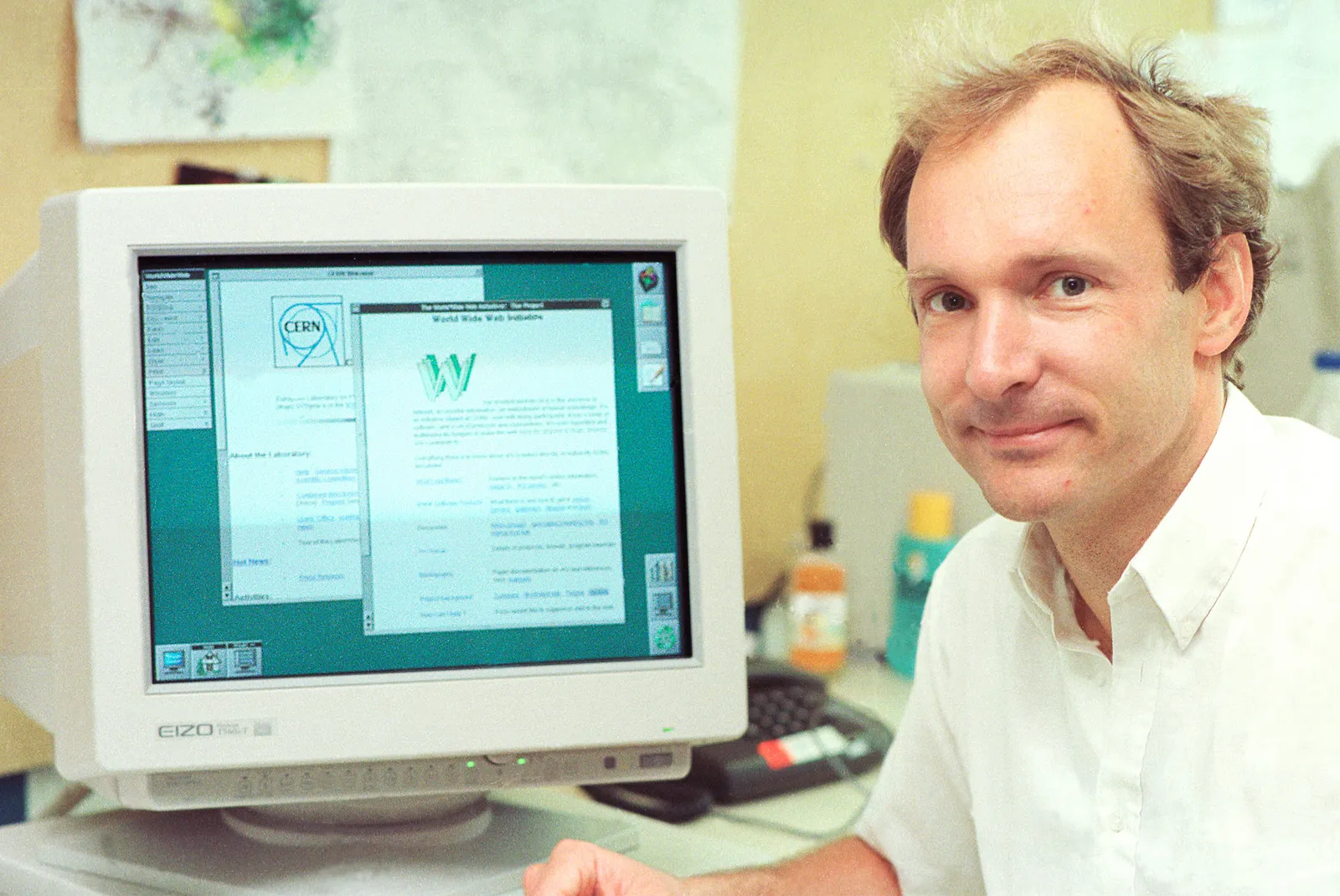Today, August 6th, 2021, marks the 30th anniversary of when Sir Tim Berners-Lee launched the first web page on the World Wide Web. I love reading about the early internet mostly as I remember some of it and kind of have a sort of nostalgic place in my heart for early websites and web design.
As of writing this, I’m a few months shy of 29 years old, making the internet just barely older than I am, a fact I would have to remind my students in Japan when I taught them computer science. This stuff is new and moving rapidly. Every year the internet changes and evolves, new trends take off, which is why I find it so exciting.
I’ve built my career on the web, as a Front-End Developer, I get to help grow it and add to it, hopefully in a positive and beautiful way. My father and brother both also owe their careers to the web and it was a driving force for my family’s settlement in DFW. My father, fresh out of seminary and needing a job, had experience working online and using Bulletin Boards as well as tinkering with computers since his childhood. At the time, 1994-1995, many companies in Dallas were hiring anyone with a pulse that knew about computers to come on as tech support for the Windows 95 rollout. Thus, my father started a career in tech which continues until this day.
I was fortunate to grow up with multiple computers in the home and my elementary school was given grants early on for great computer labs. So post-college, with the ink still wet on my film diploma, I got a job in marketing, helping to support developers at an agency in Dallas.
I’ve gone on to teach computer science, and grow my marketing/development career, all thanks to the world wide web. I’m young, the web is young, and just as I feel hopeful, with my thirties approaching, that it will be the best decade yet, and I hope likewise the web will find similar growth in its thirties alongside me.
So happy birthday WWW, and thank you Sir Tim Berners-Lee.
P.S. at the end of each of my quarterly tests while teaching computer science in Japan, I asked the same question: Who invented the World Wide Web?

As sappy as the title sounds, I am in love with Tailwind CSS. If you’re not familiar, it is a utility-first CSS framework designed to be as unopinionated as possible. This means you slap some utility classes onto your element and it is styled without writing a single line of CSS.
I was introduced to it through a friend whose agency, BeGreat, has started using Tailwind extensively in their builds. I’m a WordPress-focused developer and so are they and we’ve figured out a mostly painless way to work with Tailwind in developing fast WordPress themes fairly quickly.
The biggest issue with Tailwind, a blessing and a curse as it saves space, is that Tailwind is meant to be used with PurgeCSS, which scans your files and purges any unused classes. Obviously, with dynamic content in WordPress, there’s not really a way to know what kind of classes the end-user may need when writing.
I would imagine for more news or blog style projects, Tailwind may not be a perfect choice, but I recently finished a site for a beauty and skincare brand, Kuza Products, where, with the power of ACF, I was able to limit the client’s input to mostly pre-defined ACF fields, giving me in the PHP files control of what classes were assigned to various elements. With this approach, some careful planning, and ACF, you’re able to focus and limit the dynamic content to live purely within components you’ve defined in your PHP theme files.
There were some extra steps, I found a list of common WordPress classes and was able to whitelist them from being purged, but my main concern was the speed of development on this project. I had a very limited timeframe to craft this site, only two weeks, and so I had to come up with a fast solution.
I love browser-sync and with a little setup, was able to get it working with WordPress and rapidly create templates without having to tab between a stylesheet and the theme’s PHP files. This let me essentially have this process:
- First I essentially built the site statically in pure PHP WordPress theme files. All the images and content were saved to an assets folder and text was hard-coded into the theme.
- This let me see exactly what the final content was going to look like and make sure my theme was pixel-perfect and working as intended to match the mobile and desktop layouts.
- Secondly, I set up ACF fields and copied over the content that had been hardcoded into the theme. This step I could probably (and will probably in the future) try and set up ACF fields as I go, but I needed a quick solution.
- Third, spruced up the theme with some optimizations (mainly stripping out all non-essential plugins and functions from WordPress).
- Fourth, launch that puppy.
The result was a well built site for a national brand, high google page speed scores, and a happy client. My next projects will also almost certainly use tailwind and I’m excited to evolve my workflow with it. Recently Tailwind added a JIT compiler and I’m already looking forward to trying to use that in my next build.
As of now, if you’d like to try my setup, I have switched to using Laravel Mix to watch my files and build the tailwind script and I have a starter WordPress template on my GitHub which can be found here.
Thanks for bearing with my cheesy love-letter to Tailwind. I promise I have no affiliation with Tailwind, but I really do just love using it.

